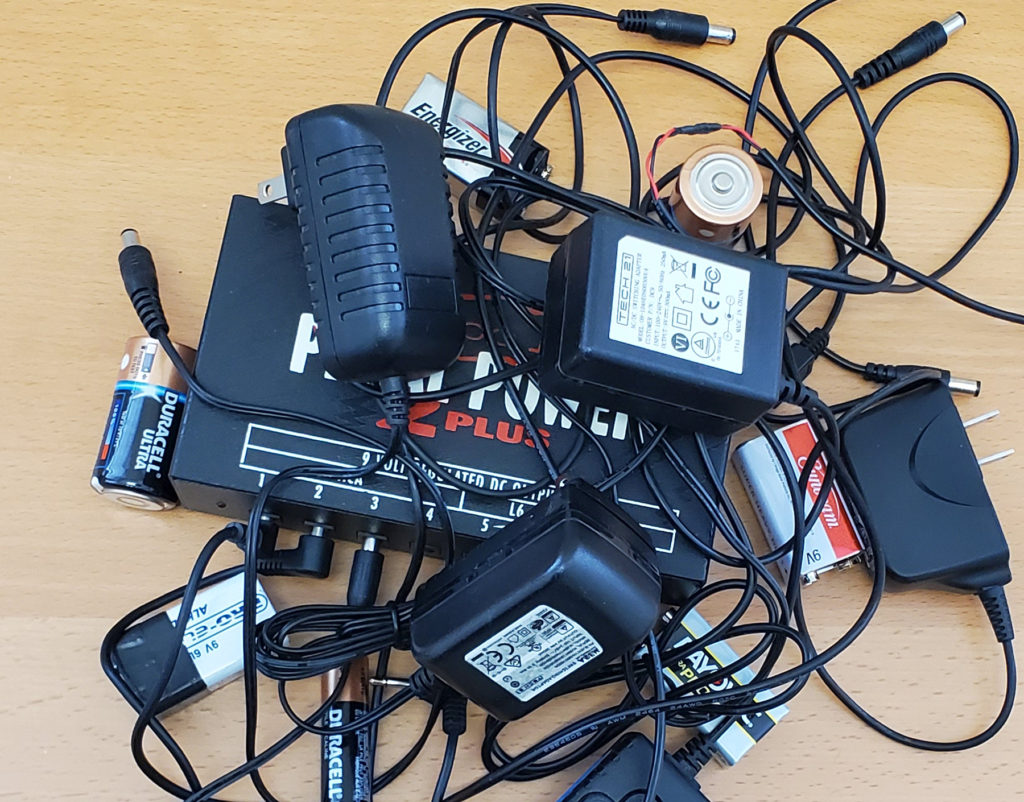
If you don’t want to, or can’t, use batteries — or if the manufacturer-recommended power supply isn’t available, you’ll have to find an alternative. But you’ll need to know a few things first to get the right one.
AC. DC. Millivolts. Milliamps. Millipedes. Center positive. Center negative. Centipedes.
A power supply can be AC or DC. NEVER MIX THE TWO!
Plugging a DC power supply into a pedal that wants AC is not such a big deal. It simply won’t be able to supply enough power for the pedal to function properly.
Plugging an AC power supply into a pedal that wants DC however, is a big deal. It will most definitely burn it up! And once the magic smoke comes out, it’s impossible to get it to go back in.
AC – Alternating current. This type of supply is typically used for pedals that require a lot of power (like digital processors). AC power flows in two directions. It has no polarity (positive or negative) because the voltage alternates.
DC – Direct current. DC power flows in one direction. It has polarity (a positive and a negative pole), so be sure to verify the positive and negative for the sleeve/tip configuration of the connector (see below). Don’t assume!
Volts/Millivots – Refers to the difference in electric potential between the positive and negative terminals. Huh? If your pedal is designed for 9 volts, stick with a 9V power supply. Anything higher will almost certainly fry the circuit board. And there goes your warranty. Some pedals might be able to take a higher voltage, but you would have to check with the manufacturer. If your pedal is designed for 18 volts, again, stick with an 18V power supply. Using a lower voltage could compromise the performance of the pedal, but luckily won’t damage it.
Amps/Milliamps – The maximum amount of current available. You can go higher on this value without worry, but go lower and the pedal will not function properly.
Sleeves/Tips – Refers to the connectors. Two common connectors found on most pedals are:
• 1/8” mini phone plug (like the ones on ear buds); usually tip positive, sleeve negative
• 5.5mm barrel plug; typically tip negative, side positive.
Regulation – Some DC power supplies are regulated. This means it will provide the exact voltage listed. These provide a nice stable, and quiet, voltage for your pedal as long as you do not exceed the current rating (amps). If you draw more than the maximum current rating, the voltage will drop. This could result in a hum and you could potentially overheat the power supply.
Some DC power supplies are unregulated. An unregulated supply will typically measure at a higher voltage than listed when it is not connected to a pedal (unloaded). For example, a 9V supply might measure at 13 volts on a voltmeter, but it will drop to 9V when it’s connected to a pedal. So there’s no need to panic.
If you have a pedalboard, it may not be practical to run each pedal with its own power supply. You can go with a power supply with multiple outputs, which is a great way to keep everything neat and free of noises. Or you can use a daisy chain to power multiple pedals from a single supply. It is a little easier on the wallet, but there can be problems with ground loops and other interference which we’ll get into next month. Stay tuned!

